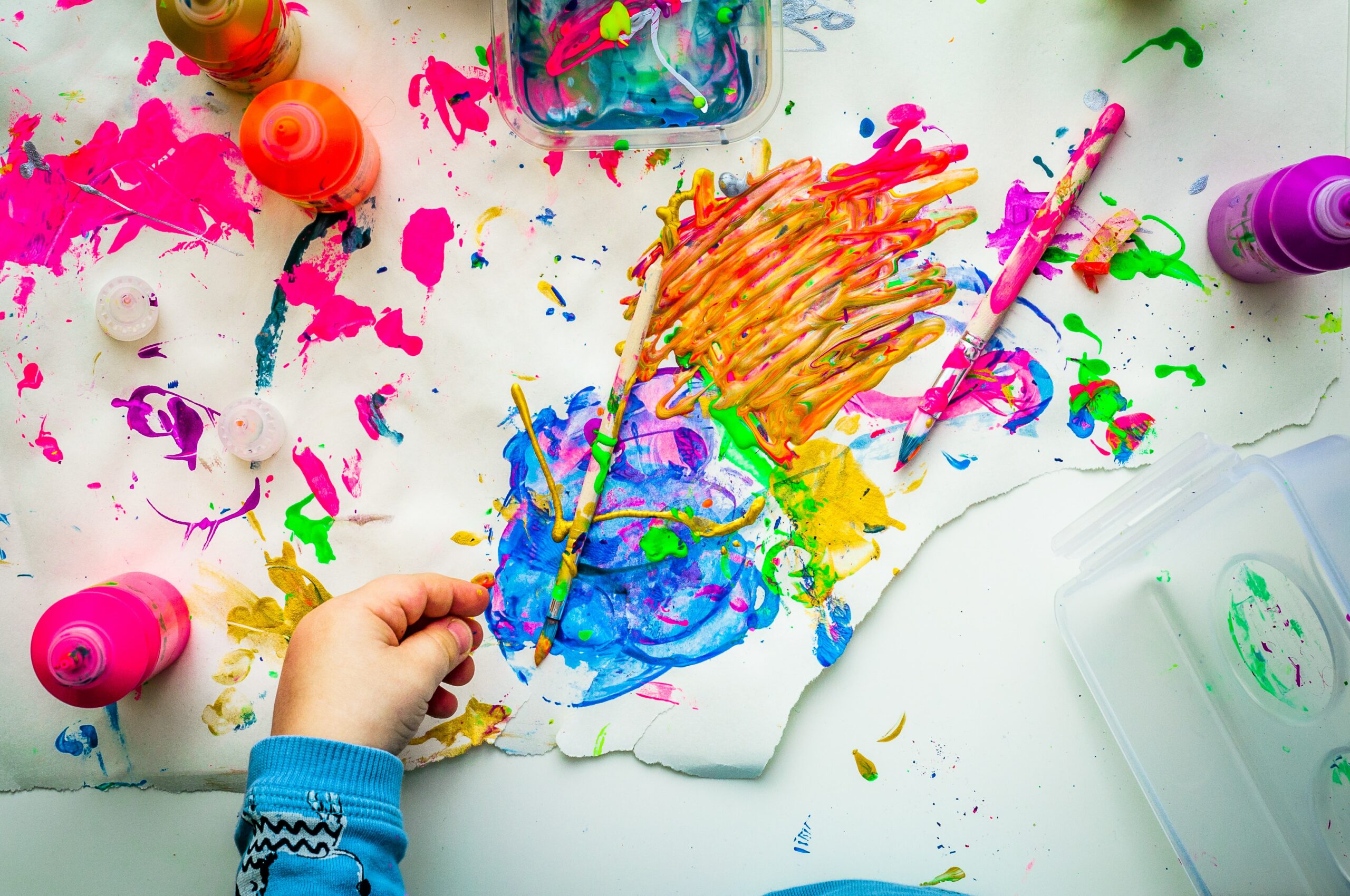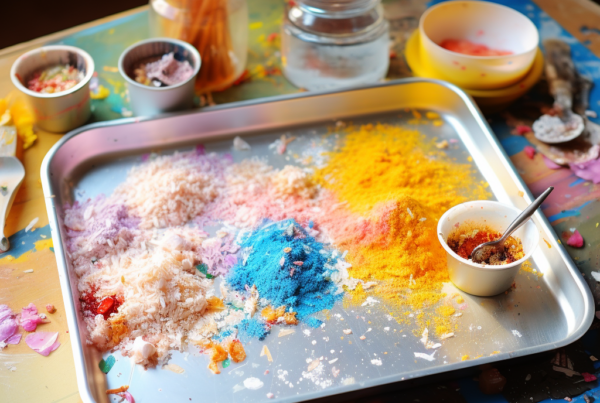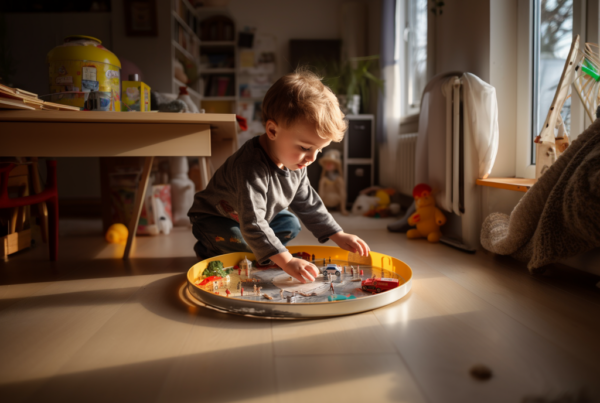There are many benefits to supporting your child’s early education at home. For one, you can tailor the activities specifically for your child’s interests and needs. You also have more control over the environment, which can help promote focus and concentration. Finally, you get to spend quality time with your child while they learn! It is never too early to start your child’s education. In fact, the first few years of life are some of the most important for brain development. Pre-school aged children can learn and thrive through engaging educational activities at home. But what activities are suitable for such young children, and how can parents know what learning opportunities are worth their time?
Getting Started
First, look closely at your child. What interests do they already have? Are they interested in music or sports? Are they eager to learn numbers and letters? Do they like building with blocks and other construction toys? Maybe they enjoy imaginative play with dolls and dress-up clothes?
Second, think about what activities you can do at home. For example, you might already have some art supplies (e.g., crayons, paper, colouring books), play food or kitchen utensils (e.g., pots, pans, wooden spoons), construction toys (e.g., blocks, toy cars), or dress-up clothes (e.g., hats, scarves).
Third, consider the learning opportunities available at home. Some parents choose to take their children to local groups, which can be great but maybe too expensive or time-consuming for some families. Instead, you could look for opportunities to engage in learning through books, games, and conversation. For example, you could use apps on your phone or tablet to learn numbers and letters with your child; read storybooks together; play dress-up, or enjoy other imaginative games.
Finally, remember that research suggests the most effective way for parents to promote their young children’s learning is through simple daily conversations. Discussing what has happened during the day, talking about objects in your surroundings, and sharing stories are great ways to start conversations with children.
Activities to do at Home
So how do you get started? Here are a few examples of engaging activities to try at home.
1. Reading with your child
Reading books is one of the most important activities you can do at home with your pre-school aged child to help support their early education. It helps children learn about letters, words, and sounds. It also helps to develop their vocabulary and comprehension skills.
You can make reading books even more fun for your child by singing the words to any songs in the book or making the animal noises mentioned during the story. You can also make up your own stories based on the pictures in the book.
Be sure to provide your child with interesting opportunities for learning through conversation afterwards. For example, what was their favourite part of the story? Which of the characters did they like and why? Did they like the ending, or would they have ended it differently? It’s one thing to be able to read or listen to a story being read, but by showing they understand what they’ve read through conversation, you can help your child learn even more.
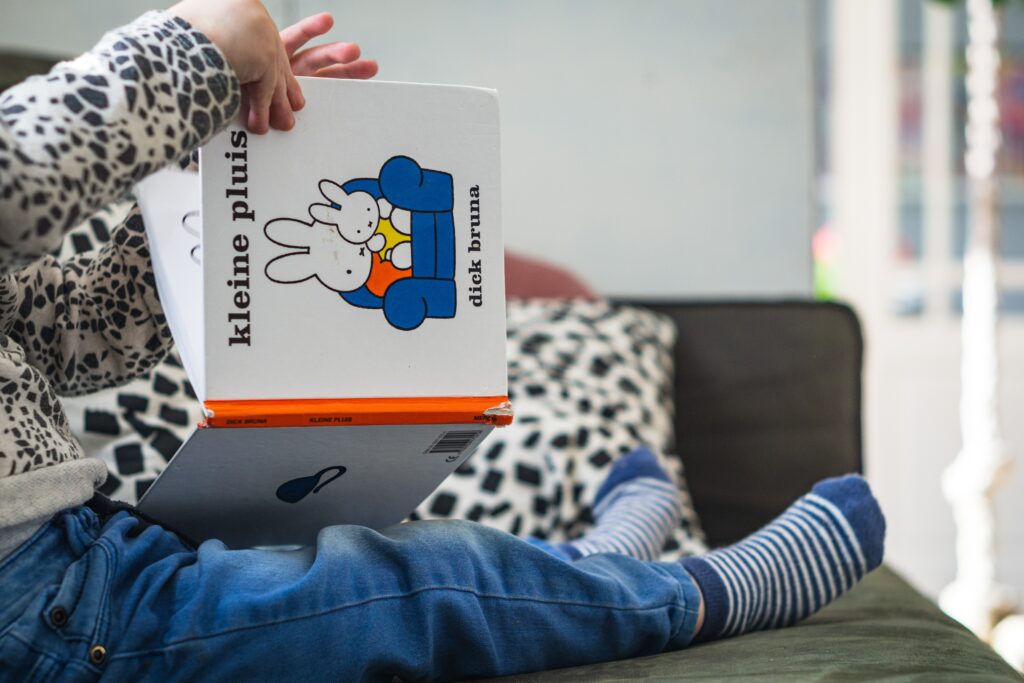
2. Music
Listening to music, singing songs, dancing, or playing an instrument are great ways for children to learn about rhythm and other elements of music. It also provides opportunities to learn about instruments and sounds and gives kids a chance to enjoy themselves through music.
You could introduce your child to different kinds of music by putting on some classical music one day, then show them where the beat is in another song that you like. You can also keep an eye out for any instruments that happen to be lying around the house (or improvise and make your own) and encourage your child to experiment with making sounds.
Singing with your child is another great opportunity to help them learn about music. For example, you could make up words as you go or pick a theme and sing different songs with that topic throughout the day (e.g., if you’re going on a road trip, sing songs about cars).
3. Playing dress-up
Playing dress-up can be an excellent way for children to get creative while learning about the world around them. Dress up provides open-ended imaginative play opportunities, which helps build language skills, improve reasoning skills, and develop social skills.
For example, you could introduce the idea of characters by dressing up in clothes similar to ones you might see on television or in books. Then, introduce the theme of what the character likes to do for fun or what they might be good at doing. You can then encourage your child to develop their own stories about the character and what they like to do together.
4. Art & Crafts
Arts and craft projects can be a great way for children to express themselves! You may choose to set aside dedicated time specifically for art, or it can become part of another activity.
There are many opportunities to get creative with art projects from items you probably already have in the house! For example, you could paint some rocks and leave them out for others to discover on nearby walks, or you could make some bubble prints by blowing bubbles on paper and watching the patterns they form.
When children are drawing, they learn about shapes, colours, sizes and how to represent their ideas using symbols on a two-dimensional surface. If children are allowed to explore a variety of art materials such as crayons, paints, pencils and chalks, they will learn how to tap into their creativity and problem solve.
If your child wants to get really creative, you can also try making homemade play-dough! This is an excellent opportunity to get them involved in helping out around the house too.
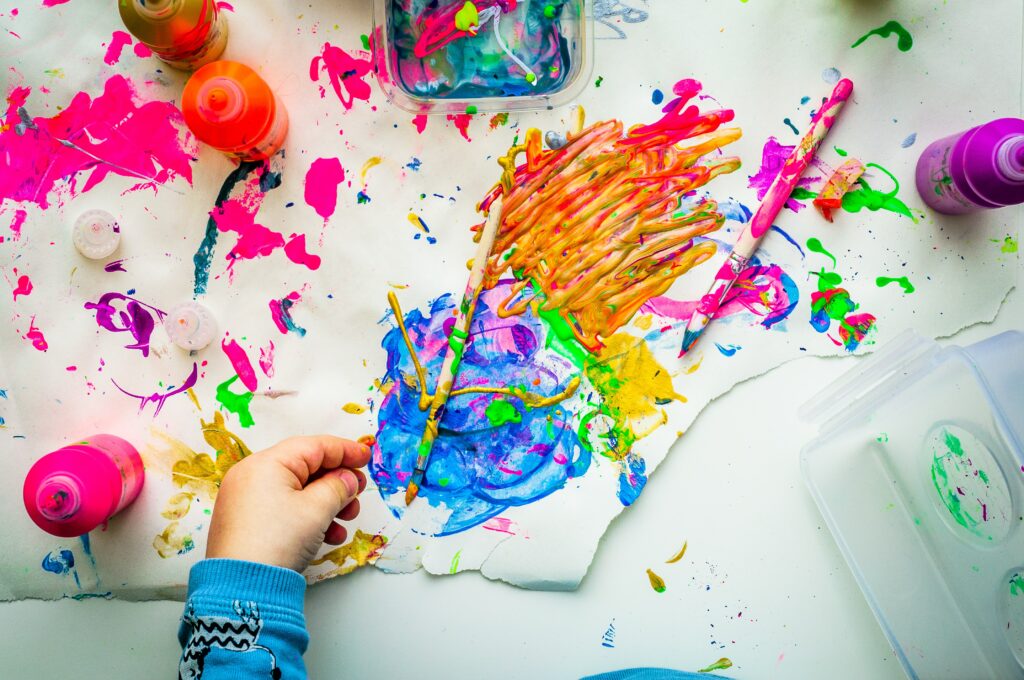
5. Play-dough
While we’re on the subject, play-dough provides fine motor development opportunities through squishing, squeezing, rolling, flattening, cutting, poking, and moulding the dough into different shapes. It also offers opportunities for open-ended play, which allows children to express themselves and develop their §own ideas about what they’re doing.
The possibilities of play-dough are endless! You can create your own using white flour, cream of tartar (which helps the dough not dry out), salt, vegetable oil, water and food colouring. You can even add ground oats, glitter, or flavour extracts to enhance the sensory experience!
6. Learning through play
Learning through play is something all young children do naturally, but they must be given opportunities throughout their day to develop these skills in a fun way.
You may choose to incorporate learning into your child’s playtime by pointing out interesting things, asking them to help you with simple tasks around the house or showing them how to do basic tasks. For example, you could teach your child how to brush their teeth by pretending that their favourite animal needs a good brushing too!
Make the learning more child-centred by using things in which they are interested. For example, if your child’s favourite colour is blue, why not ask them to put all the blue toys away on their own? Or, if your child likes making towers out of blocks, you can challenge them to make the tallest tower they can. Perhaps your child is interested in dolls, so you can ask them to pretend they are taking care of their baby.
7. Outdoor play
You can never go wrong with outdoor play for promoting your child’s physical development and learning through movement, exploration, imagination and socialising. While the weather might not always be on your side, you can still take advantage of what time you do get by having suitable clothing, such as raincoats and wellies, ready to go!
You may want to plan your outdoor activities by thinking about what you hope to get out of them. For example, if you’re going to encourage gross motor skills, you could play a game of following the leader or hide and seek. If you want to work on language development, try making up silly songs together or talking about how things might be different in different seasons of the year.
8. Playing with blocks
Playing with building blocks can encourage children to learn about shapes, follow instructions and practise motor skills. In addition, it is a great way to develop problem-solving skills. For example, children can be encouraged to build specific shapes or towers to solve problems such as stacking blocks, making the tallest building possible or fitting blocks through a shaped hole in another block.
Blocks also tend to come in bright colours, which little ones find exciting, making them even more eager to get involved.

9. Sensory play
Sensory play is great for offering opportunities for open-ended exploration that can encourage children to make sense of the world around them. It can also help children learn about science and maths concepts without feeling like learning!
For sensory play, you could set up an obstacle course in the hall for your child with pillows, beanbags and blankets to crawl through or under. You could also hide toys inside a sleeping bag and ask your little one to find them using touch alone before bringing them out into the light!
10. Cooking with your child
Cooking together is a great way to encourage children to learn about measurement and fractions, understand cause and effect through using the oven or stove, learn about physical properties of food such as taste and texture, learn to recognise different types of fruit and vegetables by sight, feel and smell.
You can make cooking tasks more child-centred by asking them to spoon flour into the mixing bowl or to help you crack eggs into a separate bowl. Not only can cooking teach children about numbers, measurements, and the importance of following instructions, but it can also help them learn about healthy eating and food groups.
You don’t always have to follow recipes either; why not try making up your own recipes instead? For example, you could blend up some carrots, courgette and avocado to make a play-dough type texture for your child to sculpt with.
Conclusion
The benefits of engaging in educational activities at home are endless, but the most important thing you can do is make sure your child has fun. If they’re having a blast with what you’ve created for them to do, then it’s more likely that they’ll want to continue doing it! So if you need some inspiration or ideas on how you can get started creating engaging and stimulating activities to try at home without spending too much time planning out every detail – think about what interests them now and start there.
If you have a child approaching pre-school age, head over to our blog for hints and tips on how to choose your child’s new nursery setting.

